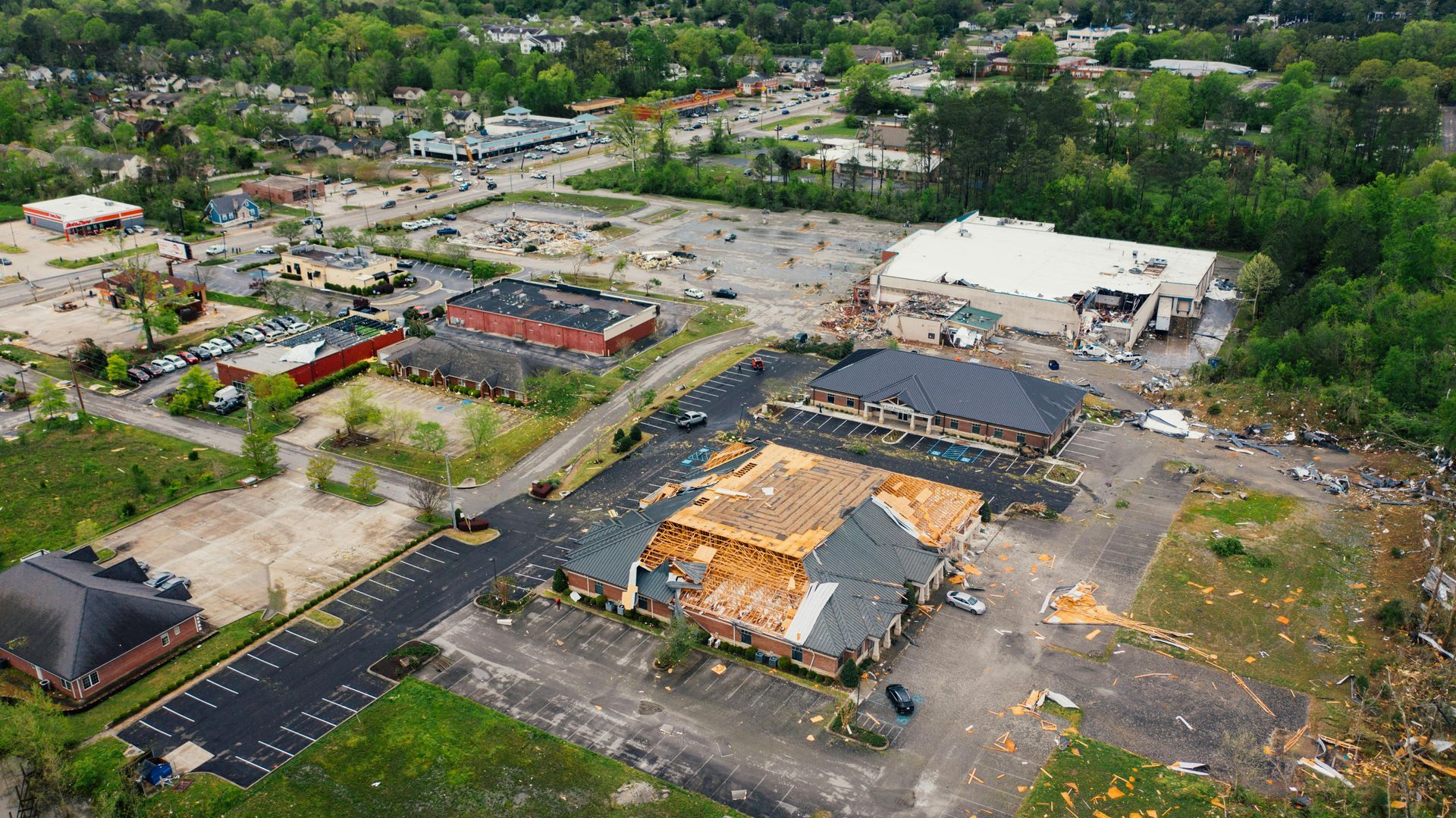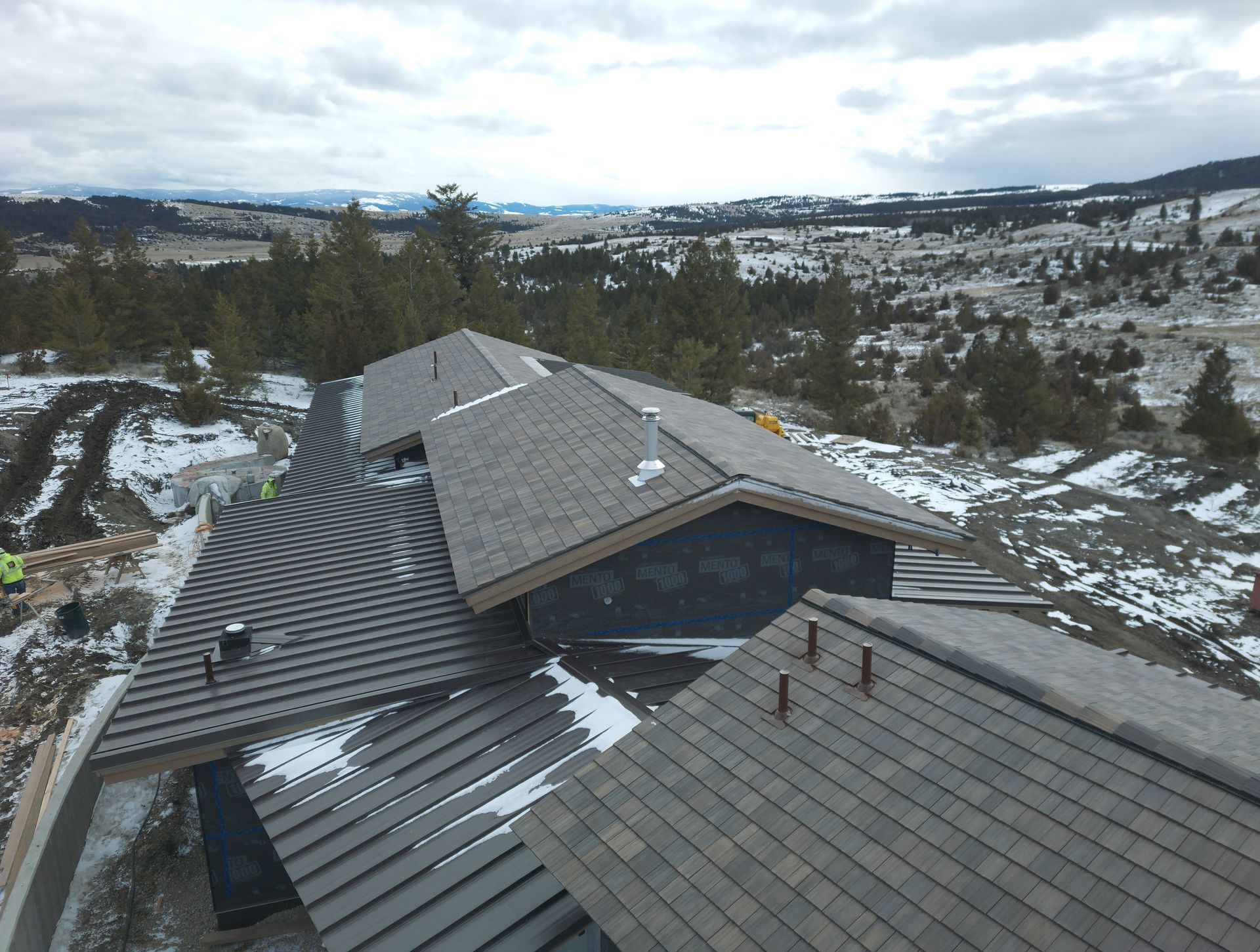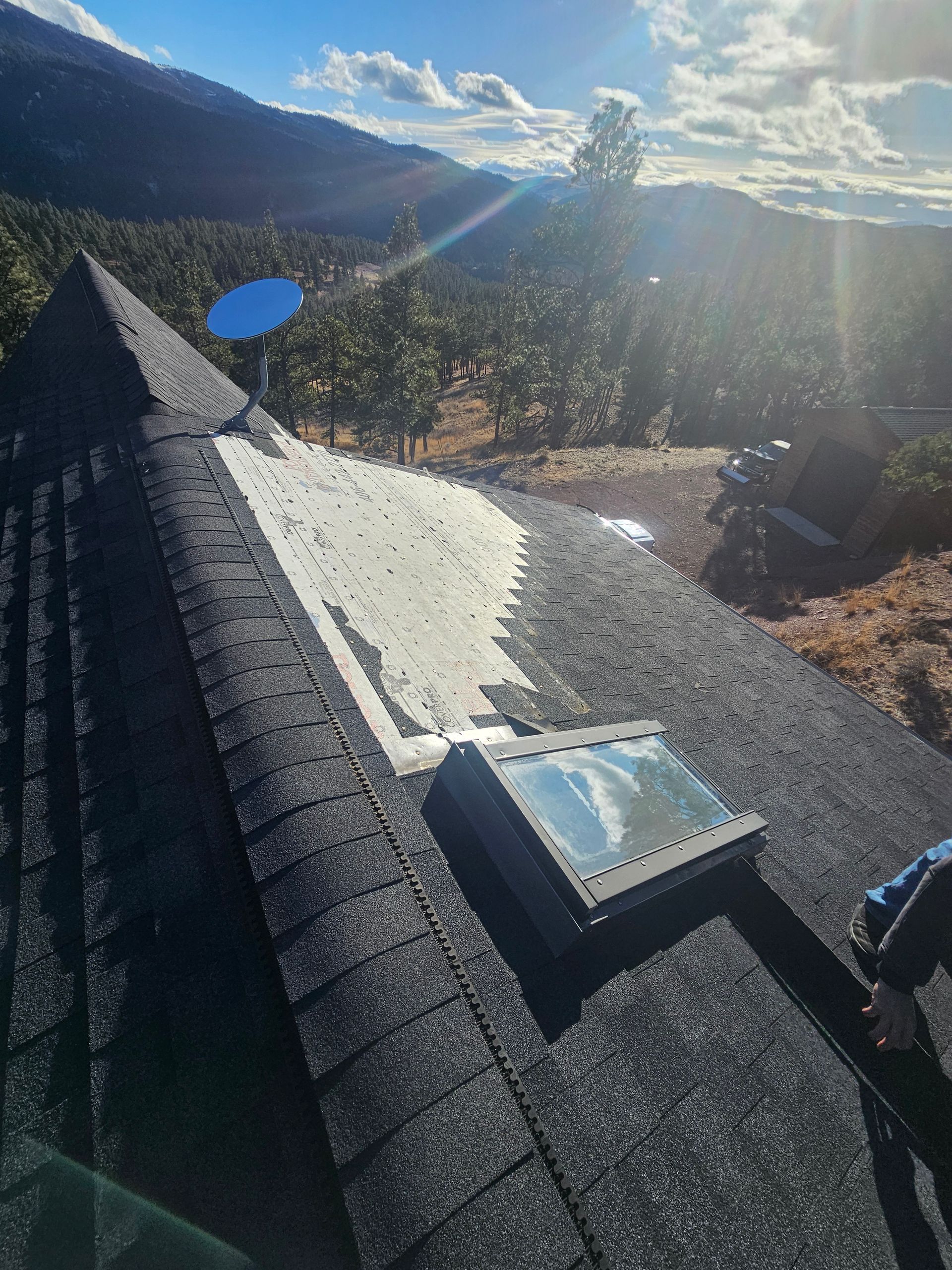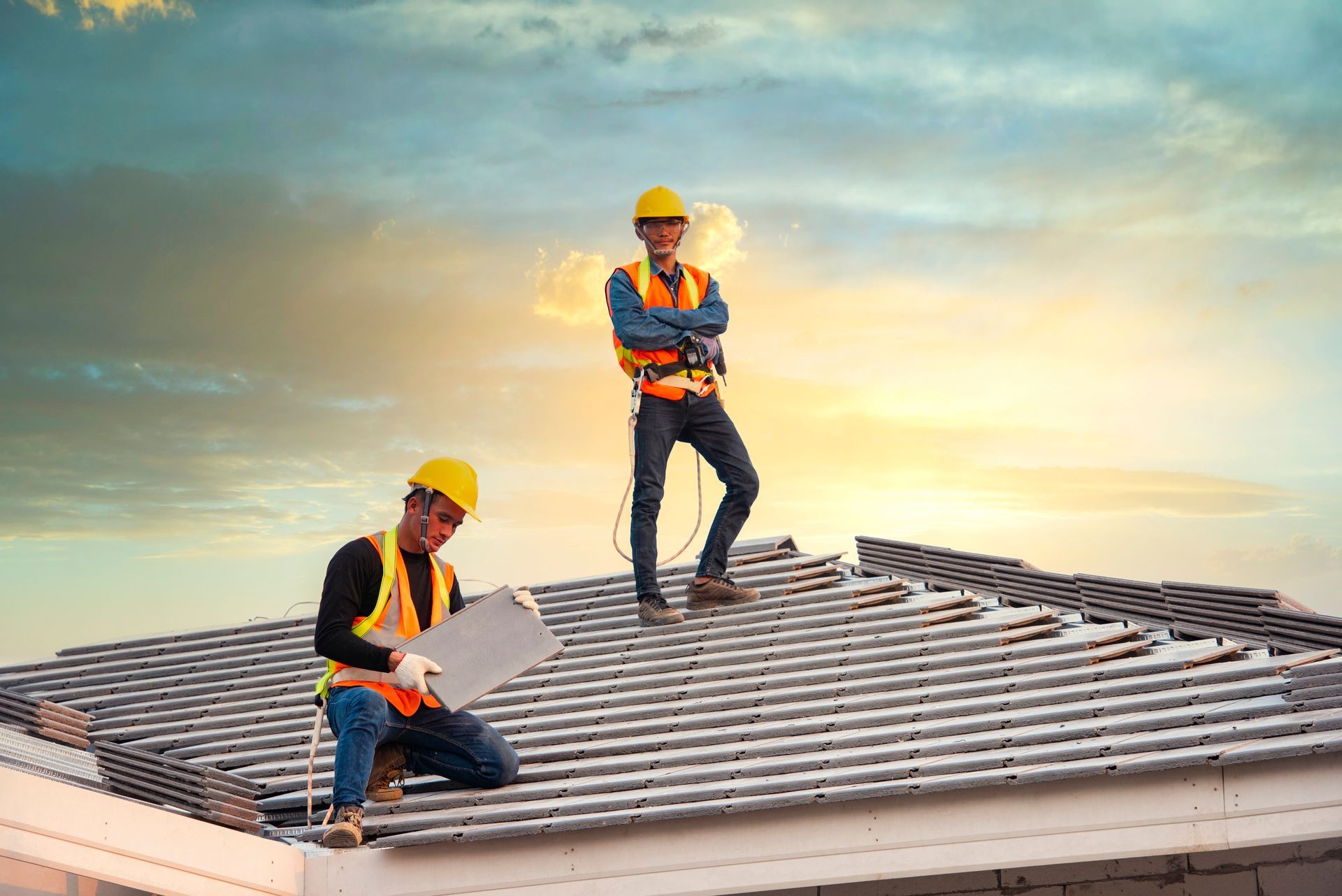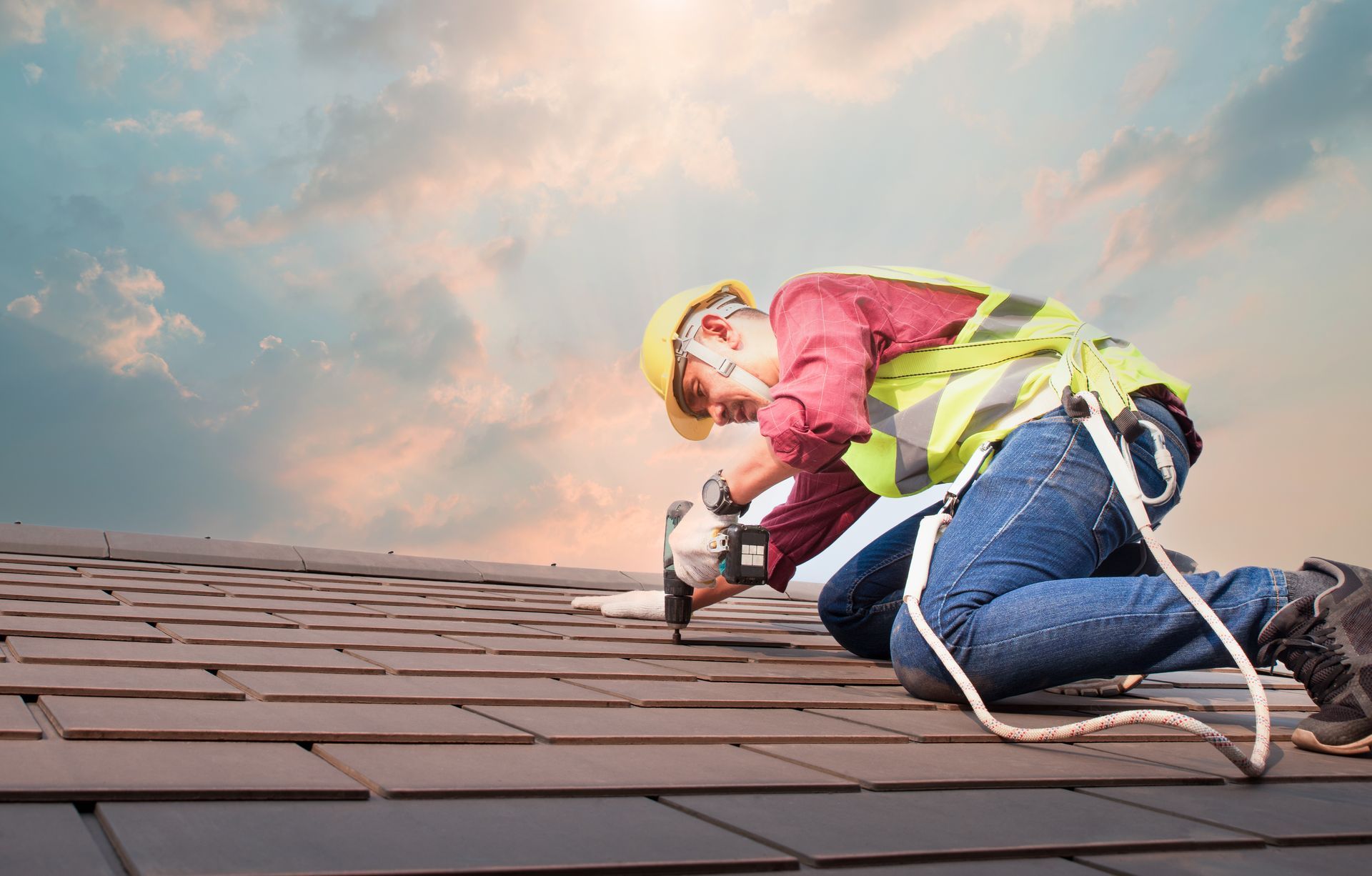Roof Storm Damage Repair in Helena & Montana
2025 Guide for Homes & Businesses
Montana storms are packing a punch and leaving countless homes and businesses with more than just a few missing shingles. Here is a statistic that might catch you off guard. Home insurance premiums in Montana jumped a whopping 22.1 percent in 2024 thanks to severe weather and mounting roof damage claims. Most people scramble to patch things up, thinking that a quick inspection will do the trick. The bigger issue is that insurance claims are now trickier than ever and even a small oversight in documentation can cost you thousands in repairs and lost coverage.
Table of Contents
- Identifying Roof Storm Damage: Signs And Common Issues
- Visual Exterior Roof Inspection Techniques
- Interior Warning Signs Of Storm Damage
- Professional Assessment And Documentation
- Immediate Steps To Take After Storm Damage
- Safety First: Initial Assessment
- Documentation And Insurance Preparation
- Professional Intervention And Temporary Protection
- Roof Storm Damage Repair Options For Homes And Businesses
- Professional Assessment And Repair Strategies
- Repair Vs. Replacement Considerations
- Preventative Material Selection
- Insurance Claims And Local Support In Montana
- Understanding Insurance Coverage Challenges
- Effective Claim Documentation And Processes
- Local Support And Community Resources
Quick Summary
| Takeaway | Explanation |
|---|---|
| Identify Storm Damage Early | Homeowners should conduct comprehensive visual inspections for shingle damage, water stains, and other indicators of roof compromise immediately after storms to prevent further issues. |
| Document Thoroughly for Insurance | Taking clear, dated photographs and maintaining detailed records of damage is crucial for insurance claims and can significantly aid in compensation processes. |
| Seek Professional Assessment | Engage with professional roofing experts promptly to identify hidden damage and implement temporary protective measures, minimizing further deterioration. |
| Understand Insurance Challenges | Be aware of the complexities of home insurance in Montana, including potential premium increases and strict claim processes, to ensure adequate coverage is in place. |
| Leverage Local Resources | Utilize community support systems such as local contractor associations and disaster recovery centers to navigate the storm damage recovery process effectively. |
Identifying Roof Storm Damage: Signs and Common Issues
Storm damage can strike Montana homes quickly and unexpectedly, turning a seemingly minor weather event into a significant property threat. Recognizing the early signs of roof storm damage is crucial for homeowners to prevent extensive and costly repairs.
Visual Exterior Roof Inspection Techniques
Identifying storm damage starts with a comprehensive visual inspection of your roof's exterior. Professional roofing experts recommend looking for specific indicators that signal potential structural compromise. Shingle damage represents the most common and visible sign of storm impact. Key warning signs include missing, cracked, curled, or dented shingles that expose your roof's underlying structure to potential water infiltration.
Careful examination of roof surfaces can reveal critical details. Hail impacts often create distinctive circular dents or soft spots on asphalt shingles. Granule loss becomes especially apparent when you notice an unusual accumulation of roofing material in gutters or downspouts. These granules protect your shingles from UV damage and environmental wear, so their sudden presence signals potential roof degradation.

Interior Warning Signs of Storm Damage
Storm damage isn't always immediately visible from the ground. Interior indicators can provide crucial early warnings of roof compromise. Water stains on ceilings, mold growth in attic spaces, or unexplained dampness represent serious red flags. These symptoms suggest water has penetrated your roofing system, potentially causing structural damage that extends beyond surface-level issues.

As recommended by Sango Build, homeowners should conduct thorough interior inspections after significant storm events. Look for subtle changes like slight ceiling discolorations, musty odors in attic spaces, or unexplained moisture accumulation. These signs often indicate water intrusion that might not be immediately apparent from ground-level roof inspections.
Professional Assessment and Documentation
While homeowner inspections provide initial insights, professional roof storm damage assessments are crucial. Trained roofing experts can identify nuanced damage that untrained eyes might miss. They use specialized tools and techniques to evaluate potential structural compromises, creating detailed documentation that becomes essential for insurance claims.
Documenting storm damage thoroughly helps protect your property investment. Take clear, dated photographs from multiple angles, capturing specific areas of concern. These images serve as critical evidence when working with insurance providers or roofing repair professionals. Remember that timely identification and documentation can significantly reduce long-term repair costs and prevent more extensive structural damage.
Storm damage in Montana requires immediate and strategic attention. By understanding these identification techniques, homeowners can take proactive steps to protect their property and minimize potential long-term roofing challenges.
Immediate Steps to Take After Storm Damage
When a severe storm strikes Montana, the moments following the event are critical for protecting your property and minimizing potential long-term damage. Quick and strategic action can significantly reduce repair costs and prevent further structural compromise.
Safety First: Initial Assessment
Your personal safety should always be the primary concern when assessing storm damage. According to Ein Press Wire, the first step is a visual inspection from a safe distance. Look for obvious signs of damage such as missing shingles, scattered roofing material, and fallen tree limbs. Avoid climbing onto the roof immediately after a storm, as structural damage may have compromised its integrity.
Carefully examine your property from ground level, using binoculars if necessary. Pay close attention to areas around chimneys, vents, and roof edges where damage is most likely to occur. Warning signs include visible gaps, displaced shingles, or debris accumulation that might indicate potential structural issues.
Documentation and Insurance Preparation
Documentation is crucial for insurance claims and future repair processes. As recommended by most restoration companies, begin by taking comprehensive photographs of all visible damage. Capture clear, well-lit images from multiple angles, focusing on specific areas of concern such as damaged shingles, water stains, or structural deformations.
Contact your insurance provider immediately to initiate the claims process. Most insurance companies have specific protocols for storm damage reporting. Be prepared to provide detailed documentation, including date-stamped photographs, a chronological account of the storm event, and any preliminary damage assessments. Keep all communication records and maintain a file with all relevant documentation.
Professional Intervention and Temporary Protection
After documenting the damage, your next critical step is to prevent further deterioration. It's advised to start contacting a professional restoration company to assess the roof and implement immediate mitigation strategies. This typically involves tarping exposed areas to prevent water intrusion and additional damage.
Professional roof repair experts can provide a comprehensive damage assessment that goes beyond surface-level observations. They use specialized equipment to detect hidden moisture, structural weaknesses, and potential long-term issues that might not be immediately apparent. These professionals can also help coordinate with your insurance company, providing expert documentation and repair recommendations.
Temporary protective measures are essential in preventing additional damage. This might include:
- Covering exposed areas with heavy-duty tarps
- Removing debris that could cause further structural stress
- Securing loose roofing materials
- Preventing water intrusion into interior spaces
Storm damage in Montana requires a proactive and systematic approach. By prioritizing safety, documenting thoroughly, and seeking professional assistance quickly, homeowners can effectively manage the aftermath of severe weather events and protect their property investment.
Remember, time is of the essence. The faster you respond to storm damage, the more you can minimize potential long-term structural and financial consequences.
Roof Storm Damage Repair Options for Homes and Businesses
Storm damage repair requires a strategic approach that varies depending on the extent of destruction and the specific needs of residential and commercial properties. Understanding the available repair options can help property owners make informed decisions about restoring their roofing systems.
Professional Assessment and Repair Strategies
Professional roof inspections form the cornerstone of effective storm damage repair. Immediate professional assessment is crucial for both homes and businesses. Hidden damage such as microscopic cracks, subtle leaks, or structural compromises can escalate quickly if left unaddressed.
Repair options typically range from minor interventions to complete roof replacements. For residential properties, this might involve targeted shingle replacement, flashing repair, or localized patch work. Commercial properties often require more extensive solutions, including full membrane replacements or comprehensive structural reinforcement.
Repair vs. Replacement Considerations
- Ellingson Roofing LLC recommends carefully evaluating whether repair or full replacement makes more financial sense. Several key factors influence this decision: Age of the existing roof
- Extent of storm damage
- Overall structural integrity
- Cost of potential future repairs
- Long-term performance expectations
Small repairs might be suitable for minor damage. Homeowners with basic skills can handle simple interventions like replacing a few damaged shingles or applying temporary sealants. However, complex or structural damage demands professional expertise to ensure long-term roof integrity and prevent potential safety risks.
Preventative Material Selection
Making strategic material choices can significantly reduce future storm damage risks. We also highlight the importance of selecting impact-resistant roofing materials designed to withstand Montana's challenging weather conditions.
Modern roofing technologies offer advanced solutions for storm-prone regions. Impact-resistant shingles, reinforced metal roofing, and specialized synthetic materials provide enhanced durability. These options can:
- Resist hail damage
- Minimize wind uplift
- Provide better water resistance
- Extend overall roof lifespan
Property owners should consult with professional roofing specialists to determine the most appropriate materials for their specific environment and building requirements. Each property presents unique challenges, and a customized approach ensures optimal protection and long-term performance.
Storm damage repair is more than a simple maintenance task—it's a critical investment in protecting your property's structural integrity, value, and safety. By understanding available options and working with experienced professionals, homeowners and businesses can effectively navigate the complexities of roof storm damage restoration.
Insurance Claims and Local Support in Montana
Navigating insurance claims for roof storm damage in Montana requires strategic understanding and careful documentation. The complex landscape of insurance processes demands homeowners and businesses be well-prepared and informed about their coverage and local support mechanisms.
Understanding Insurance Coverage Challenges
Montana's challenging weather environment has significantly impacted home insurance markets. According to Lending Tree, the state experienced a staggering 22.1% increase in home insurance premiums in 2024, primarily driven by severe weather events and escalating claims. This dramatic rise underscores the critical importance of comprehensive insurance coverage for storm-related damages.
The U.S. Treasury Department reports that homeowners insurance markets have seen paid loss ratios exceeding 85% in regions frequently impacted by severe convective storms. This financial pressure translates to more stringent claim processes and a greater need for detailed documentation from property owners.
Effective Claim Documentation and Processes
Successful insurance claims depend on meticulous documentation and understanding of policy specifics. Homeowners should:
- Photograph all storm damage comprehensively
- Maintain detailed repair estimates from professional roofing contractors
- Document the timeline of damage and repair efforts
- Keep all communication with insurance adjusters
- Understand the specific coverages in their policy
Timely reporting becomes crucial. Most insurance policies require prompt notification of storm damage, typically within 30-60 days of the event. Delaying documentation can potentially compromise your claim's validity and reduce potential compensation.
Local Support and Community Resources
Montana offers unique local support mechanisms for storm damage recovery. Winter Weather Risk Analysis indicates that an estimated 21% of homes face potential winter weather-related damages, with average insurance claim costs reaching $18,000. This statistic highlights the importance of local resources and proactive community support.
Local resources can include:
- County emergency management offices
- Community disaster recovery centers
- Local roofing contractor associations
- State-sponsored homeowner assistance programs
- Free insurance claim consultation services
Montana residents should leverage these local support networks to navigate the complex process of storm damage recovery. Professional guidance can help streamline insurance claims, ensure proper documentation, and maximize potential compensation for roof storm damage.
Ultimately, understanding your insurance coverage, maintaining comprehensive documentation, and utilizing local support resources are key strategies for effectively managing roof storm damage in Montana's challenging environmental conditions.
Frequently Asked Questions
What are the common signs of roof storm damage?
Common signs of roof storm damage include missing, cracked, or curled shingles, water stains on ceilings, mold growth, and unusual moisture in the attic. Look for visible gaps, debris accumulation, and any soft spots on your roof.
How should I document storm damage for my insurance claim?
To document storm damage for your insurance claim, take clear, dated photographs from multiple angles. Capture all visible damage, including shingles, water stains, and structural issues, and maintain a chronological account of events leading up to and following the storm.
When should I seek professional help for roof storm damage?
You should seek professional help for roof storm damage as soon as possible after a storm. Professionals can identify hidden damage and use specialized tools for a comprehensive assessment. Early intervention can minimize further deterioration and help with insurance documentation.
What is the difference between roof repair and replacement?
Roof repair typically involves fixing specific issues like damaged shingles or localized patches, while replacement entails installing a new roof system entirely. Factors such as the extent of damage, age of the roof, and cost of repairs will influence whether repair or replacement is the best option.
Montana Storms Hitting Hard? Protect Your Roof, Siding, and Investment—Fast
You just read how quickly storm damage in Helena MT can spiral from a few missing shingles to major leaks and insurance headaches. When water stains show up or shingles start curling, every hour matters. You want a team that jumps into action and handles it all—from urgent roof repairs to thorough damage documentation and even siding or gutter help. Delaying means risking serious structural issues and possible claim rejection, especially with Montana insurance now more challenging than ever.
Stop damage in its tracks with Ellingson Roofing LLC. We know the signs and steps because harsh Montana weather is our specialty. Get a free full roof inspection plus expert help with photos and paperwork so you get the coverage and repairs you deserve. Visit Ellingson Roofing in Helena now and see why local homeowners trust our complete roofing, siding, gutter, and solar solutions. Do not wait until the next storm puts your home or business at even greater risk. Contact us today—your property’s safety can’t be postponed.






